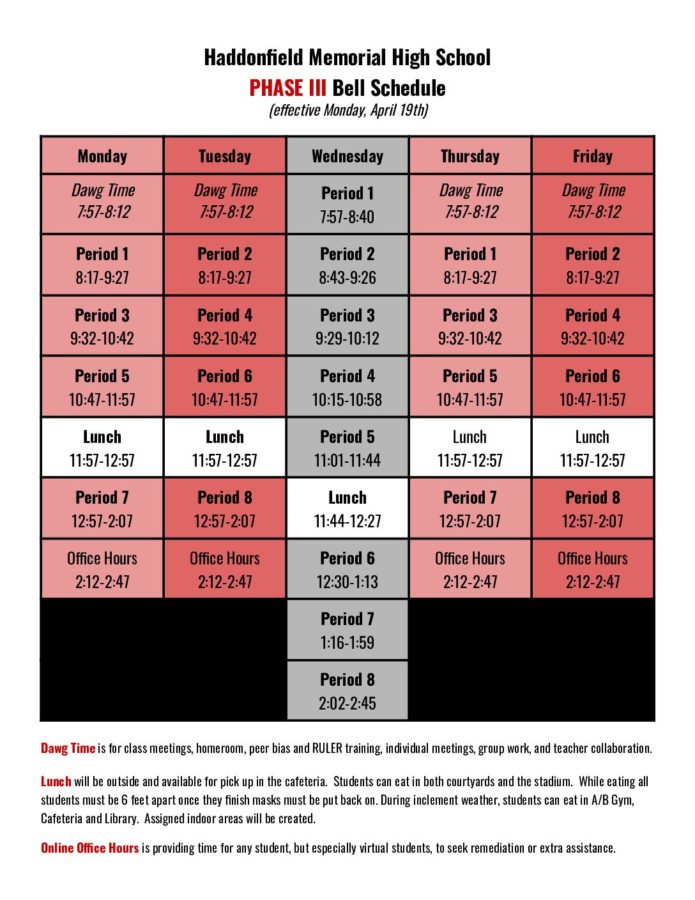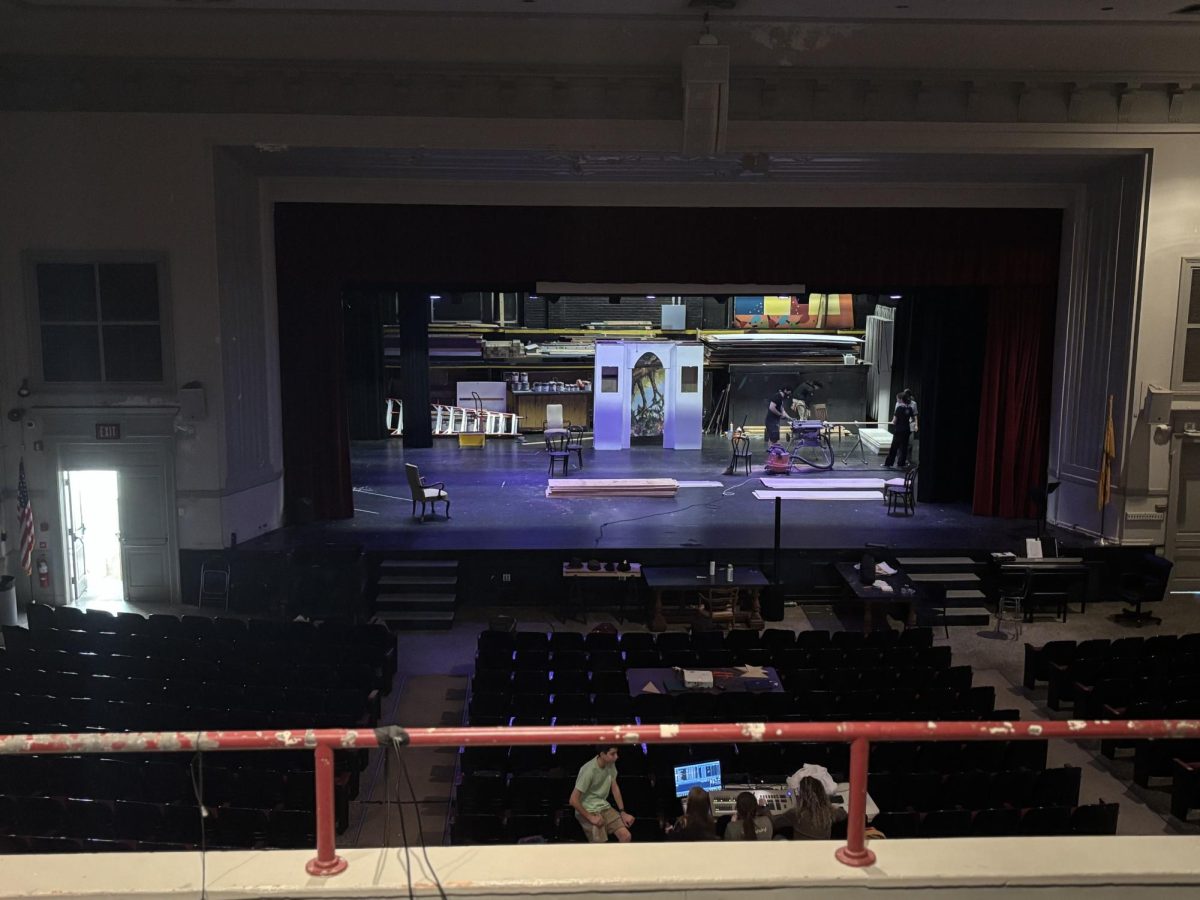Phase III Instruction Is Unfavorable to Students and Teachers Alike
April 8, 2021
On July 28, the final reopening plan was presented to the Board of Education. Included in this plan was Phase III of the reopening model, which is currently set to begin April 19 for grades 1-12. With regard to high schoolers, students would attend school five days a week from 7:57 to 2:47. The schedule includes 15 minutes of “Dawg Time,” which is free time set aside for club meetings and homeroom. Block periods would continue for Monday, Tuesday, Thursday, and Friday, with 70 minute classes. Wednesday would have all eight periods, with 43 minutes per class. After reflecting upon this plan, it is clear that this schedule serves no practical purpose, neglects safety, and does not prioritize education and student well-being.
The current plan actually loses teaching time for many classes. The Phase III schedule would have 70 minutes of teaching time per class, plus optional office hours for students to drop in if they need help. Our current schedule for Phase II has 64 minute periods, with 25 minute office hour blocks. Both Phase II and Phase III instruction have cut teaching time from our original schedule, so teachers are already struggling to keep up with their curriculums. A lot of teachers have mandated office hours during Phase II so that they gain back some teaching time. Because teachers cannot mandate office hours during Phase III instruction, they actually lose teaching time. This change is detrimental to classes such as physics and history. If the whole point of reopening schools more is so kids receive a better education, Phase III is ridiculously unhelpful.
The shortened class periods may be the effect of the extended lunchtime period. Lunch is one hour on block period days, and 43 minutes long on Wednesdays. This extended time is to encourage students to eat lunch at home. However, many students do not have a car or are unable to travel to their house and back to eat lunch within one hour. Those students are expected to eat outside or in common areas like the gym, but certain students may feel uncomfortable being unmasked around so many people. HMHS junior Ann Haas says, “I don’t feel safe coming back to school full time, as I believe that eating lunch without masks is irresponsible and certainly not worth the 24 minutes of actual instruction gained.” As much as social distancing can be enforced, students will still be unmasked within close proximity to their peers, which increases the risk of an outbreak and a rise in infections.
There are also issues with the optional office hours and dawg time. If a student needs help in multiple subjects, they are expected to show up for multiple classes in one period. This can cause unnecessary stress and confusion, as seen when dealing with Wednesday office hours. The same principle applies to “Dawg Time.” Because there is a separate time set for club meetings and homerooms, more activities might be inclined to meet more frequently. Many students at our school are involved in multiple clubs, so this time could be a source of stress instead of a source of downtime.
One cannot address the downsides of Phase III instruction without talking about the blatant disregard for safety. Although cases have been declining, they are now increasing at an alarming rate, and we are soon to be entering a fourth wave. Currently, Camden County is considered very high risk, according to the data analysis site Covid Act Now. We are averaging 4,000 new cases every day in New Jersey and 64,000 cases worldwide, as The New York Times reports. It is unwise to continue reopenings and loosening safety restrictions when cases are rising. Additionally, the agreed upon terms of transitioning from Phase II to Phase III were if and only if cases continued to decline. Even though cases are lower, they are far from declining. It is irresponsible of our school district to push forward and put at risk the lives of their students, teachers, and families.
Students have addressed their concerns with transitioning many times but feel like they aren’t being listened to. Current junior Hannah Epstein says, “There is already so much mental stress and pressure that is put on students and I don’t believe putting any more on is the right way to go, especially with only a quarter left in the year.” Teachers are also upset about this transition, specifically those who rely on mandated office hours to complete their curriculum.
Obviously it is important to balance risk with safety. Nothing will be 100% safe, and it is unfair to ask our education system to guarantee safety. One thing they can guarantee however is that the input of students and teachers will be valued and considered when making decisions. And if the Phase III planning shows us anything, it is that the Board of Education will continue to push forward legislation that is damaging to the community as a whole.








